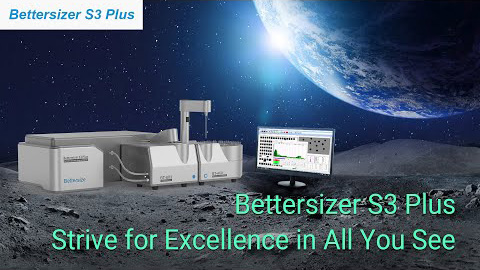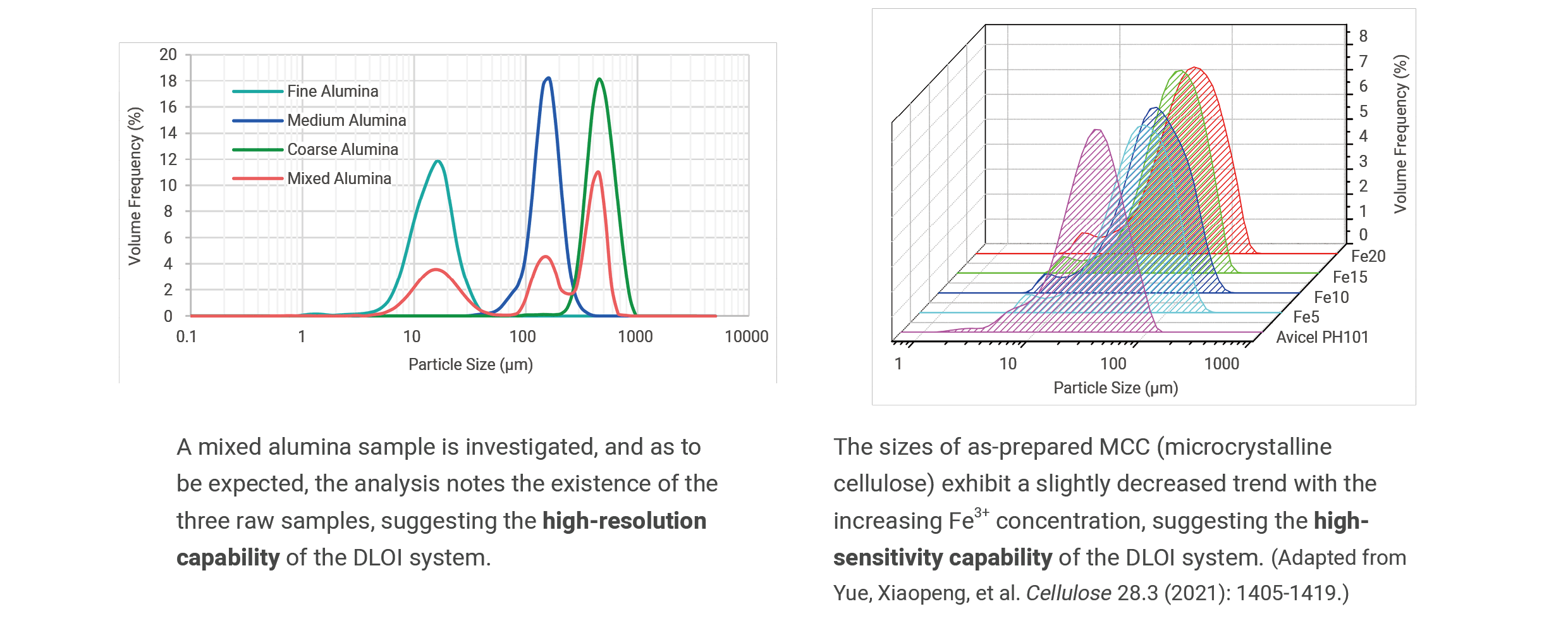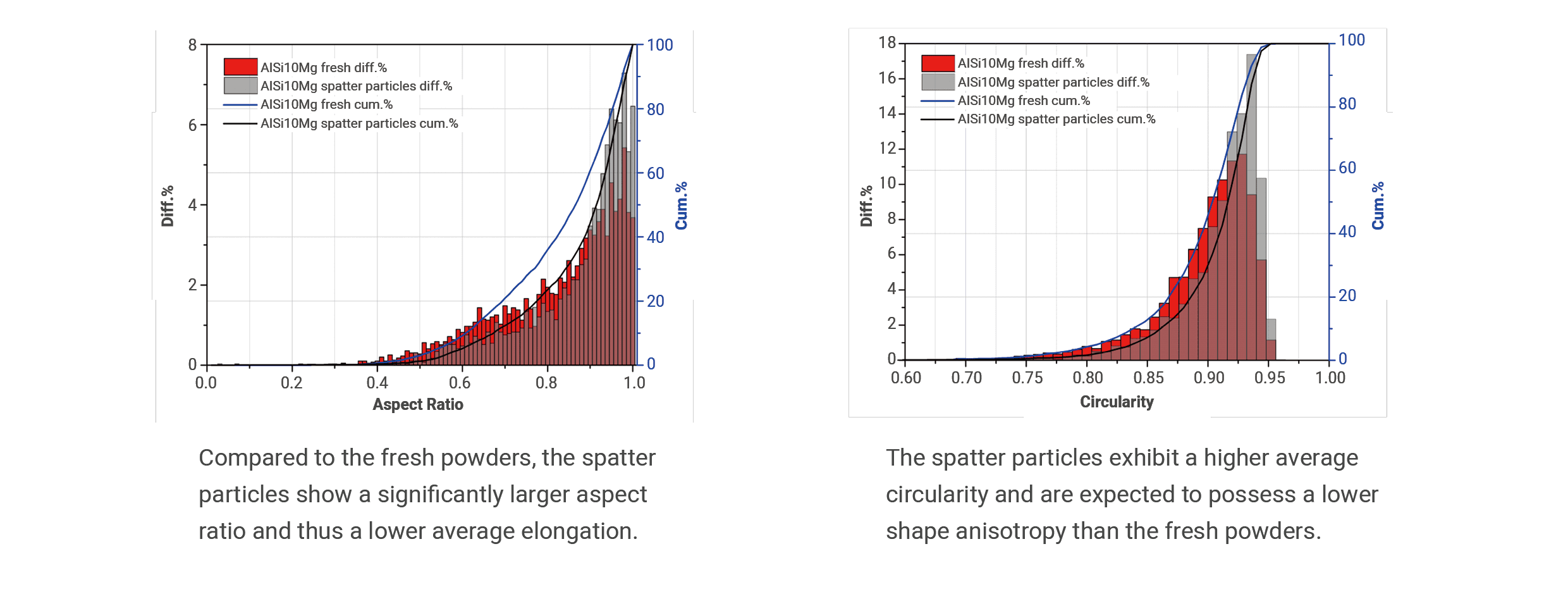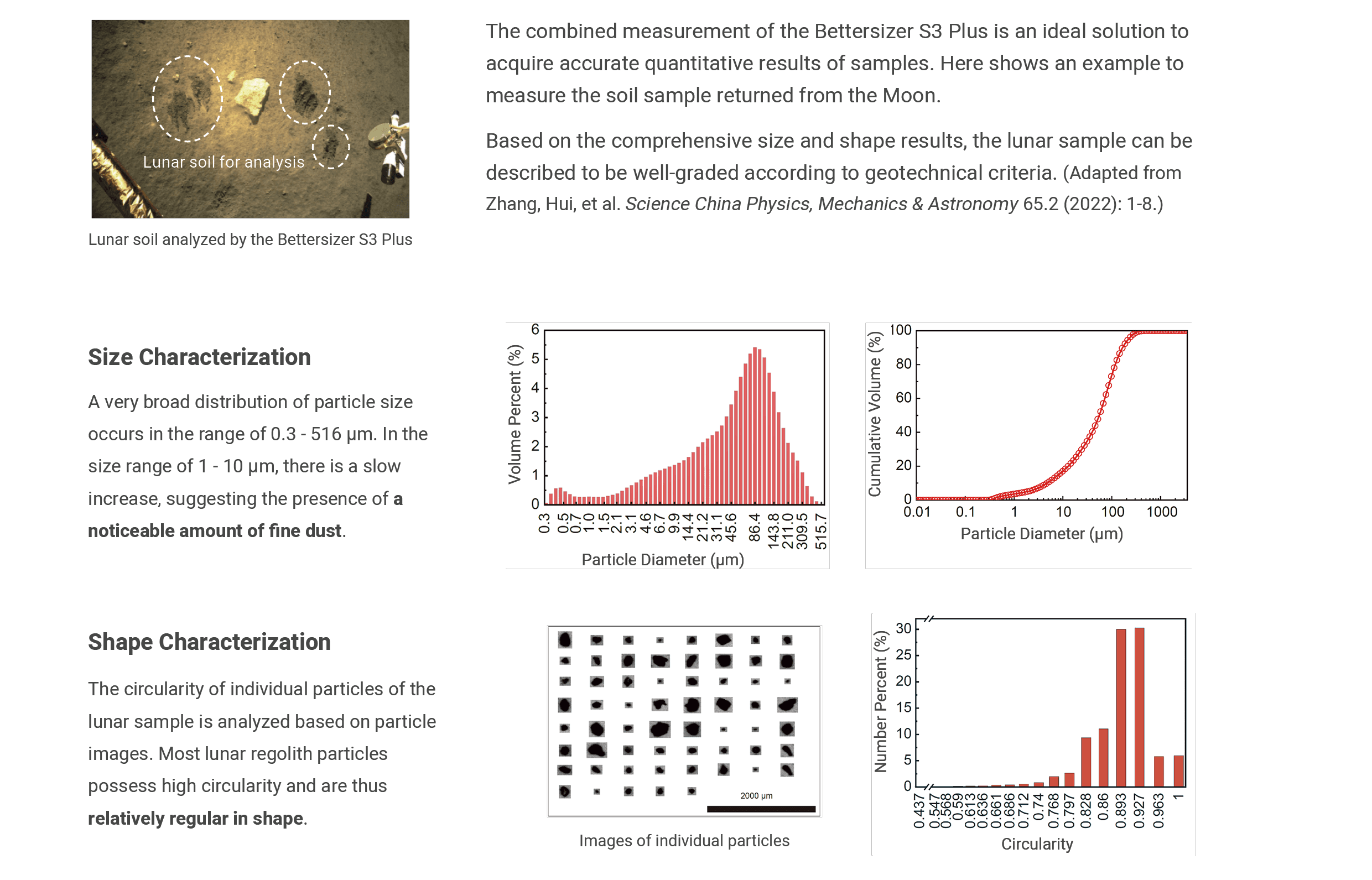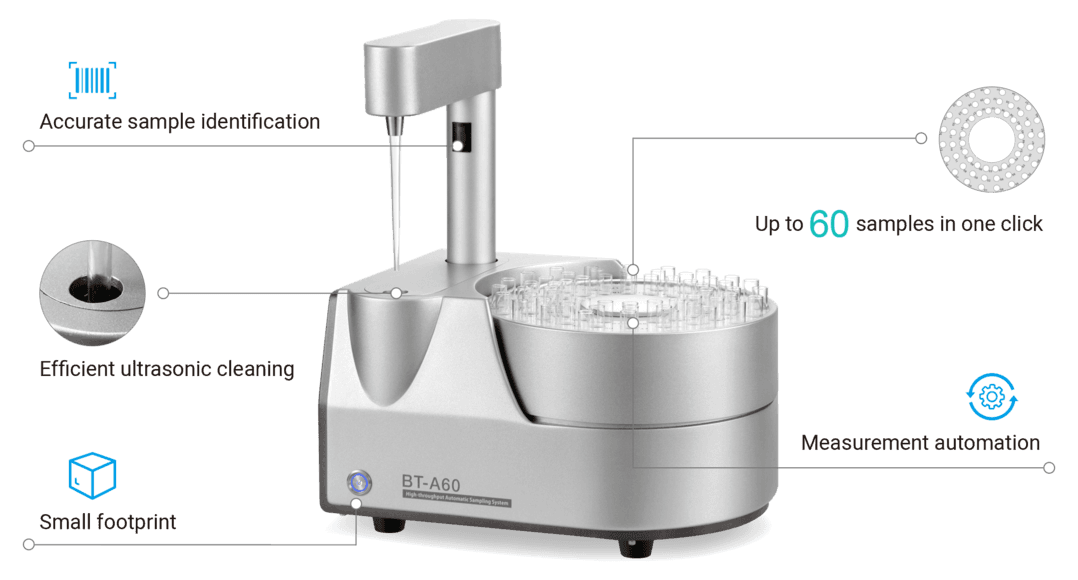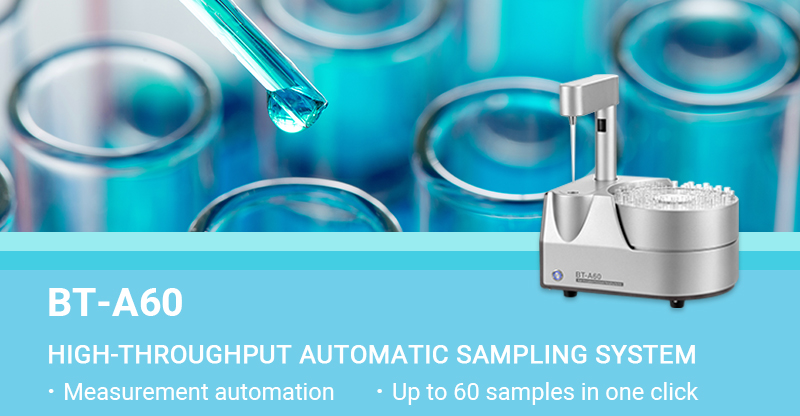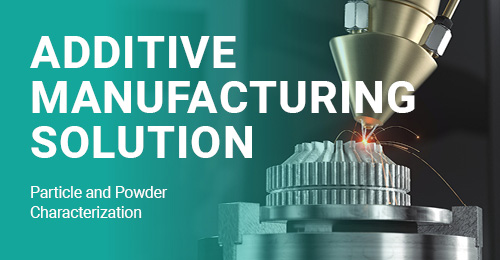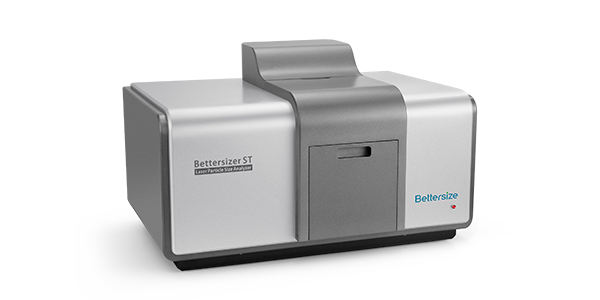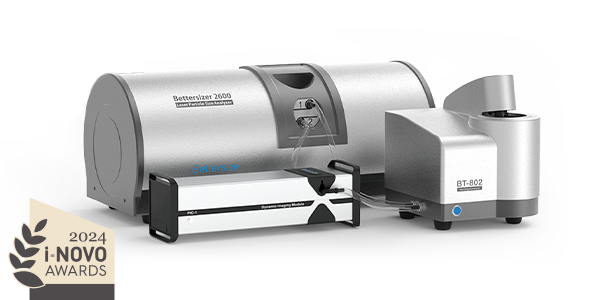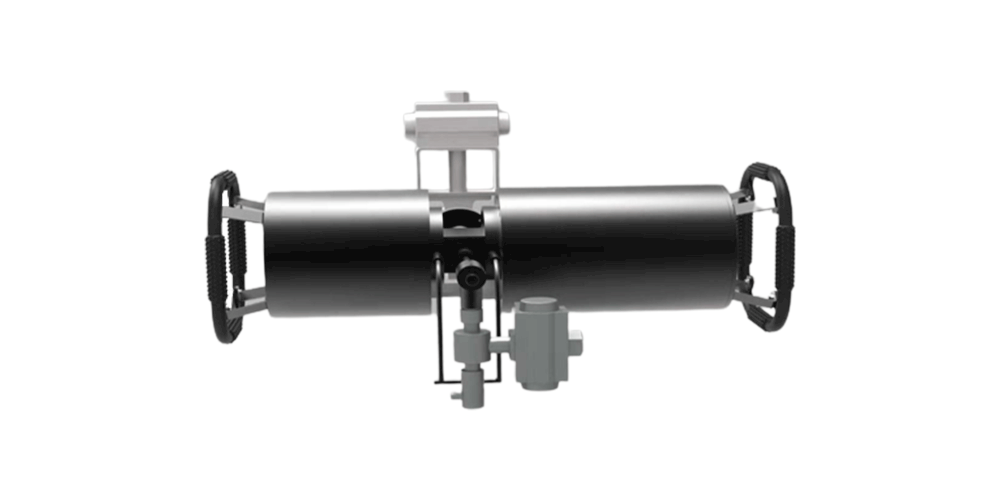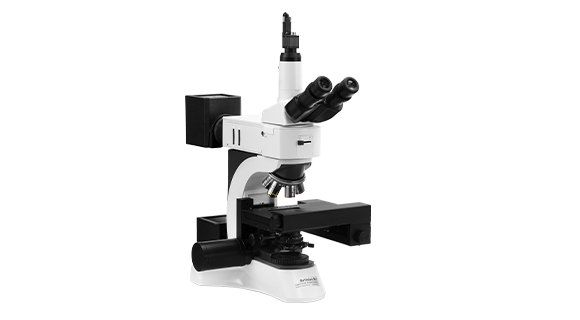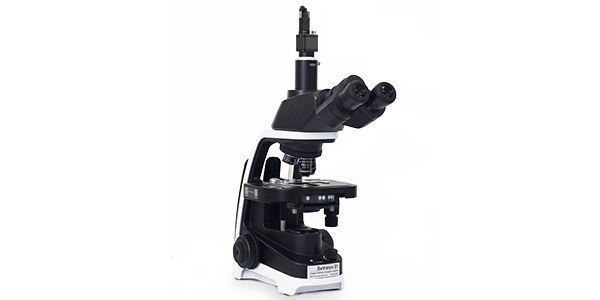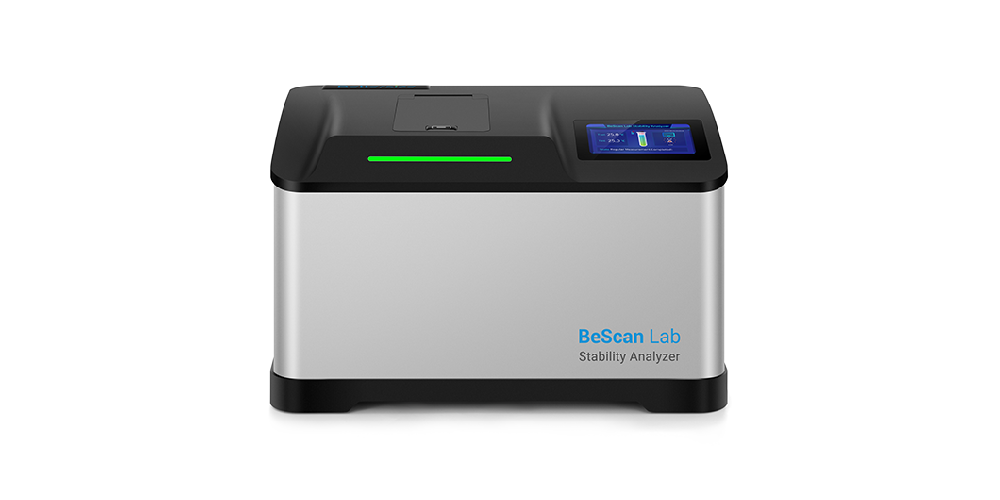Bettersizer S3 Plus
Le Bettersizer S3 Plus combine la diffraction laser et l'analyse dynamique d'images en un seul instrument. Il peut mesurer la taille et la forme des particules de 0,01 μm à 3500 μm. Sa sensibilité exceptionnelle, que ce soit pour les particules ultrafines ou les particules surdimensionnées, et sa résolution inégalée en font l'analyseur de taille et de forme le plus puissant pour les chercheurs enthousiastes qui mènent des recherches scientifiques de haut niveau.
Caractéristiques et avantages
- ● Plage de mesure de 0,01 à 3 500μm (système laser), 2 à 3 500μm (système d'imagerie).
- ● Combinaison de la diffraction laser et de l'analyse dynamique d'images en un seul instrument, permettant d'obtenir simultanément des résultats sur la taille et la forme.
- ● Le système breveté DLOI (Dual Lenses & Oblique Incidence) permet de mesurer des particules ultrafines jusqu'à 0,01 um.
- ● La technologie d'imagerie à double caméra permet d'afficher les images des particules en temps réel et de détecter les particules surdimensionnées jusqu'à 3500 um.
- ● La mesure de l'indice de réfraction permet de déterminer l'indice de réfraction d'échantillons inconnus et d'améliorer la fiabilité des résultats.
- ● Conformité avec 21 CFR Part 11, ISO 13320, USP <429>, CE
Vidéo
How to Install and Operate Bettersizer S3 Plus 
Bettersizer S3 Plus | Strive for Excellence in All You See 
BT-A60 Autosampler | Demo 
Demo of Bettersizer S3 Plus 2-In-1 Particle Size and Shape Analyzer 
Fundamentals of Bettersizer S3 Plus 2-In-1 Particle Size and Shape Analyzer 
Bettersizer S3 Plus | Particle Size and Shape Analyzer 
Bettersizer S3 Plus Overview | Strive for Excellence in All You See 
Vue d'ensemble
Caractéristiques
Performance
Technologie
Spécifications
Accessoire
1. Vue d'ensemble de l'analyseur de la taille et de la forme des particules Bettersizer S3 Plus
Le Bettersizer S3 Plus est un analyseur de la taille et de la forme des particules par diffraction laser équipé de deux caméras CCD à grande vitesse (grossissement 0,5X et 10X) pour capturer des images de l'échantillon mesuré. Pendant la mesure, les particules dispersées dans le milieu choisi sont pompées à travers deux cellules d'échantillonnage. Dans la première, la lumière laser à ondes courtes (532 nm) illumine les particules et est diffusée. Les 96 détecteurs détectent les signaux optiques dans une gamme d'angles allant de 0,02° à 165°. Les caméras CCD prennent continuellement des photos des particules à travers la deuxième cellule d'échantillonnage pour fournir des informations sur la forme dans une plage de 2 à 3500 µm.
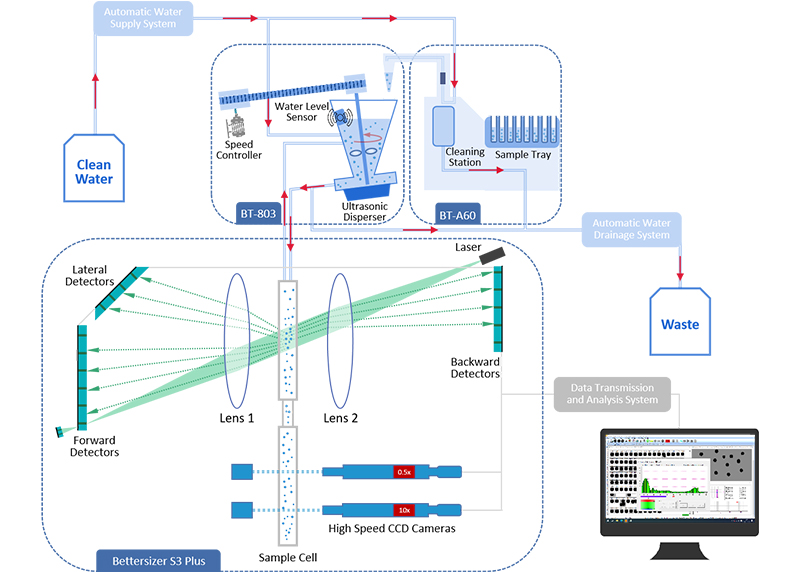
2. Système breveté DLOI (Dual Lenses Oblique Incidence) : Diffraction laser
Caractéristiques et avantages :
- Mesure avec précision les particules ultrafines avec la grande plage angulaire (0,02 - 165°) avec 96 détecteurs.
- Système optique robuste avec une résolution supérieure grâce à la conception à double lentille.
- Un seul système laser à ondes courtes (532 nm) fournit un spectre de diffusion continu avec une longueur d'onde constante.
- Temps de stabilisation et de préchauffage nul grâce à une source lumineuse à l'état solide
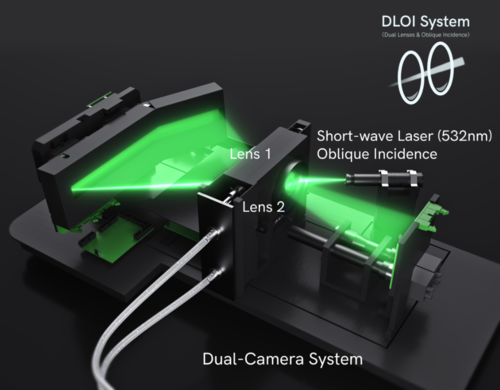

3. Système à double caméra : Analyse dynamique de l'image
L'analyse dynamique d'images permet de mieux comprendre les matériaux grâce aux informations complètes sur la forme ou la morphologie qui sont indépendantes de la diffraction laser. Les particules individuelles présentant des propriétés géométriques spécifiques, telles que les agglomérats, les particules écrasées et les particules étrangères, peuvent être suivies efficacement grâce au système à double caméra.
Caractéristiques et avantages :
- Caméras 0,5x et 10x - photographient une gamme extrêmement large de tailles de particules
- Lampes stroboscopiques à grande vitesse : capture jusqu'à 10 000 images de particules en 60 secondes, offrant des résultats de forme authentiques.
- Convient à la mesure d'échantillons hétérogènes aux propriétés optiques inconnues
Le Bettersizer S3 Plus intègre la diffraction laser et l'analyse dynamique d'images dans un seul instrument pour caractériser simultanément la taille, la distribution et la forme des particules sur une large plage dynamique. En travaillant en tandem, les utilisateurs peuvent acquérir une compréhension plus approfondie du comportement des matériaux afin d'accélérer le processus de dépannage et de développement de méthodes.
- Système DLOI - mesure avec précision les particules ultrafines jusqu'à 0,01 μm.
- Système d'imagerie à double caméra - détecte efficacement les particules surdimensionnées jusqu'à 3 500 μm.
- Système 2 en 1 - obtient simultanément des résultats sur la taille et la forme des particules.
- Temps de réponse rapide - génère rapidement des résultats en 10 secondes.
5. Applications
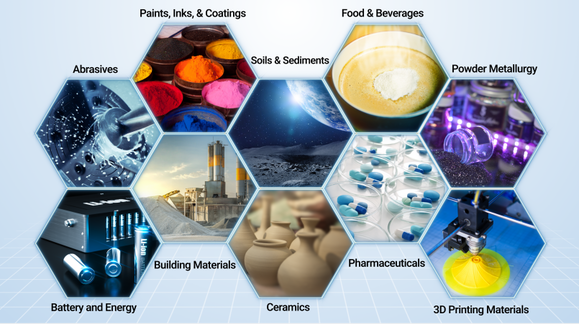

Citations
- Bettersizer 2600
Functional redundancy as an indicator for evaluating functional diversity of macrobenthos under the mussel raft farm near Gouqi Island
DOI: 10.1016/j.aquaculture.2023.740024 Read ArticleZhejiang Ocean University | 2024Biological traits analysis (BTA) helps to evaluate the effects of different environmental variables on the traits-based functional composition of macrobenthos. However, research on functional traits of macrobenthos under mussel farming is limited. We investigated the spatial and temporal response of the benthic system in terms of taxonomic and functional diversity to environmental variables of farming and natural stressors resulting from suspended mussel farming near Gouqi Island of eastern China Sea. The functional traits of macrobenthic assemblages under mussel farming were characterized by “medium adult body size”, “vermiform body form”, “high flexibility”, “infauna”, “semi-motile”, “gonochoristic”, “surface deposit-feeders”, “carnivores”, “semi-motile burrowers”, and “tube-dwellers”. Functional redundancy was stable in response to mussel farming stresses among seasons, whereas species diversity showed efficient to evaluate natural variables. Functional diversity was significantly affected by farming stressors rather than natural variables, Further analysis using multivariate methods together with continuous monitoring were highlighted to evaluate the impacts of mussel farming. Our results reinforce the importance of macrobenthic species and functional traits analysis to evaluate human stresses driven impacts in offshore ecosystems. By analysing the environmental variables with different sources, independently, we concluded the main effects of human pressures on macrobenthic community. Such distinction could be particularly effective to isolate variable environmental descriptors and evaluate their effects on functional diversity, making the current approach promising for the evaluation of ecological effects of anthropogenic stressors in aquaculture areas. - Bettersizer 2600
Degradation characteristics and utilization strategies of a covalent bonded resin-based solid amine during capturing CO2 from flue gas
DOI: 10.1016/j.seppur.2023.125621 Read ArticleChina University of Petroleum | 2024In this study, various types of degradation as well as attrition which are possibly encountered in a circulating fluidized bed temperature swing adsorption (CFB-TSA) process, were conducted experimentally to evaluate the stability of a resin-based solid amine sorbent. Other characterizations methods, such as elemental analysis (EA), Fourier transform infrared spectroscopy (FTIR) etc. were applied to further reveal the degradation mechanisms. The results showed that thermal degradation occurs from 140–160 °C due to the decomposition of amine group. The CO2-induced degradation occurs from a higher temperature of 160–180 °C accompanied by the production of urea. Hydrothermal stability is good below 130 °C, but the ionic impurities in steam crystalized on particle surface can accelerate the degradation. Oxidative degradation is the most harmful, which starts at a lower temperature of 70–80 °C with the formation of aldehyde. The existence of H2O in atmosphere can alleviate the oxidative and CO2-induced degradations. The employed sorbent has a very low attrition index of 0.05, which is 1–2 orders lower than typical commercial fluidized bed catalysts. Based on the results of stability evaluation, some design suggestions for proper utilization of this sorbent or other similar resin-based sorbents have been provided in an industrial CFB-TSA process.
- Bettersizer 2600
De-branching of starch molecules enhanced the complexation with chitosan and its potential utilization for delivering hydrophobic compounds
DOI: 10.1016/j.foodhyd.2023.109498 Read ArticleShihezi University | 2024The current study aimed to prepare the complexes between debranched-waxy corn starch and chitosan polymers (DBS-CS), and then investigated their corresponding structural characteristics, rheological property and potent application in Pickering emulsion. The results indicated that the existence of chitosan significantly inhibited starch short-range molecular rearrangement for all DBS-CS samples, which was manipulated by both debranching treatment and chitosan content. Interestingly, this is the first study to reveal that the outstanding peak at 1.8 ppm in 1H NMR spectrum for sample DBS-CS was gradually shifted towards a lower-field region following an increased chitosan content. Moreover, the debranching treatment shifted the crystallinity pattern from A-type to B-type and the relative crystallinity of DBS-CS decreased gradually with the increased content of CS. All samples had a pseudoplastic fluid and shear-thinning behavior with an enhanced shear resistance following the complexation. The DBS-CS was applied in a Pickering emulsion for showing a greater emulsifying stability and a lower gel strength than native NS-CS prepared emulsion. Importantly, the encapsulation ability of curcumin in the DBS-CS emulsion was significantly improved, followed by an increase of 15.45% for its corresponding bioavailability compared to the control. Therefore, this study might highlight a potential carrier for delivering the bioactive substances in a green pattern. - Bettersizer 2600
Heat-induced aggregation behavior of wheat gluten after adding citrus pectin with different esterification degree
DOI: 10.1016/j.foodhyd.2023.109420 Read ArticleGansu Agricultural University | 2024Wheat gluten aggregation during heat treatment is beneficial to the final quality of gluten-based products. Exogenous pectin can affect gluten aggregation. However, the effect of pectin with different degrees of esterification on the heat-induced aggregation behavior of gluten and its possible mechanism are still unclear. Thus, the heat-induced aggregation behavior of gluten after adding pectin with different esterification degree was studied in this study. When the temperature was raised from 25 °C to 95 °C, pectin affected gluten aggregation and was related to the degree of esterification. Specifically, the results of rheological properties and particle size indicated that low-ester pectin improved the viscoelasticity of gluten and promoted gluten aggregation. Thermal properties revealed that enthalpy of gluten added with low-ester pectin (37%) increased from 92.96 J/g to 95.40 J/g during heating process. Structurally, the fluorescence intensity and surface hydrophobicity of gluten added with low-ester pectin (37%) were lower than those added with high-ester pectin (73%). In addition, low-ester pectin (37%) significantly increased the disulfide bond content (from 15.31 μmol/g to 18.06 μmol/g) and maintained β-sheet content of gluten compared with gluten alone at 95 °C, indicating that low-ester pectin was more likely to induce gluten aggregation. However, scanning electron microscope showed that the gluten added with low-ester pectin (46%) exhibited a denser network structure at 95 °C than that added with low-ester pectin (37%). These results will provide a theoretical base for the regulation of gluten aggregation and the quality of gluten-based products by pectin with different esterification degree.
- 1
- 2
- 3
- 4
- 5
- 6
- 84
Ressources sélectionnées
Témoignages


Analyseur de taille de particules apparenté
-
Bettersizer ST
One-stop Particle Size Analyzer
Dispersion type: Wet
Measurement range: 0.1 - 1,000µm
Repeatability: ≤1% variation
-
Bettersizer 2600
Laser Diffraction Particle Size Analyzer
Measurement range: 0.02 - 2,600μm (Wet dispersion)
Measurement range: 0.1 - 2,600μm (Dry dispersion)
Measurement range: 2 - 3,500μm (Dynamic imaging)
-
BT-Online1
Online Particle Size Analyzer
Dispersion type: Dry
Measurement range: 0.1 - 1,000μm
Accuracy: ≤1% (D50 of certified reference material)
-
BeVision D2
Dynamic Image Analyzer
Dispersion type: Dry
Measurement range: 30 - 10,000μm
Technology: Dynamic Image Analysis
-
BeVision M1
Automated Static Image Analyzer
Dispersion type: Dry
Measurement range: 0.3 - 10,000 μm
Technology: Static Image Analysis
-
BeVision S1
Classical and Versatile Static Image Analyzer
Dispersion type: Dry & Wet
Measurement range: 0.3 - 4,500 µm
Technology: Static Image Analysis
-
BeScan Lab
Stability Analyzer
Particle size ranges from 10 nm to 1 mm
Volume fraction up to 95%
Compliance with ISO/TR 18811, 13097, 21357, 22107






